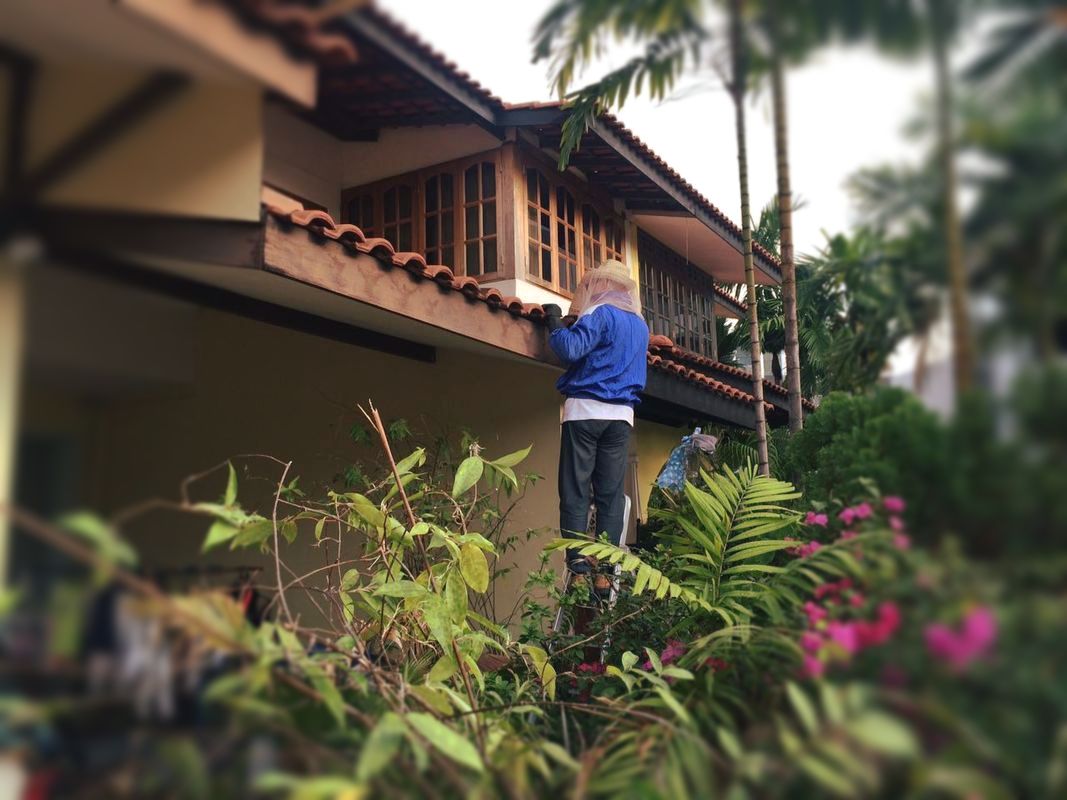FAQ ABOUT BEES AND HONEY
If you have any question that you wanted to ask the local beekeeper, here is the place that you can post it. Our urban beekeeper will try his best to answer or find out the answer for your. Thanks!
Help! Bees have built a nest near me!
Do not worry! Most honey bees are docile but some are more easily provoked than others, depending on the stage of the colony. If you want to remove the bee hive, let Mr Xavier Tan know the type of bees and location of the beehive by taking a short video clip/pictures and sending it to him. He will give you advice from there. Alternatively, with a little adjustment to your daily routine, you may be able to just leave the bees alone and enjoy their company.
How do you remove the bees humanely?
We will prepare a wooden box to trap the queen and the colony. All the honey comb will be removed together with all the broods and young bees and stored inside the box. When majority of the bees are already inside the box, Mr Xavier Tan will then seal the box and transport them to a prearranged private garden. The colony of bees will then be setup in their new home to help pollinate the garden. The process can takes from 2 hours to days, depending on the size of the colony. Read more here.
Do you charge for bee removal services?
Yes.
How much do you charge for bee removal services?
The rate we charge to remove a colony of wild honey bees will depends on the difficulty to access, the type of honey bee, and the size of the colony. The process will relatively be mI'm interested in beekeeping. Honestly, I don't have much experience in it apart from being amazed by Youtube videos of beekeeping of European Honey Bees. I understand that Asian Honey Bees are different. Can you offer any advice on how to get started?ore complete as compared to pest control (exterminator).
Why do you charge for bee removal services?
We have taken into account the costs of transporting and relocating the beehive. You can be guaranteed that it will be a humane process. Mr Xavier Tan always places the survival of the bees first, such as by returning the honey to the bees after relocating them. This is also an environmentally-friendly service. No toxic pesticides would be used in the removal. Thus, this labour-intensive process of relocating the colony by moving the queen bee first, may take up to 8 hours. In addition, there is a need to discourage the public from indiscriminately removing bees from their homes if there is a possibility to co-exist with them. Read more here.
I'm interested in beekeeping. Honestly, I don't have much experience in it apart from being amazed by Youtube videos of beekeeping of European Honey Bees. I understand that Asian Honey Bees are different. Can you offer any advice on how to get started?
To get started to do beekeeping, first you should attend some classes on basic beekeeping and get comfortable with bees. After that you should ask yourself why you want to keep bees. If you are going after for the honey, buying a jar is must cheaper and no waste of time. Beekeeping is much like keeping a dog or a cat, it require cares and loves. Getting stung by bees is inevitable and buying beekeeping equipment can be an investment. Beehive box, bee suits, tools, brush, and many more. Beside that you also need to learn to grow plants and upkeep a garden that is full of nectars for the bees. If your neighbour is concern about you keeping bees, you must have a second place for the bees. There are a lot more things you will need to consider. Come and join my next workshop to find out more about what you need to know before starting your first beehive.
What does your workshop offer?
One of the interesting session would be honey appreciation. beside getting to taste some of the honey produced by our local honeybee you might also taste some very unique honey that I have collected from my beekeeper friends around the world. I have honey from Bhutan which was given by Bhutan Agriculture representative, first and second place Honey from UK Apiculture competition, as well as honey from Arabic beekeeper who is selling it at USD 1000 per kg. If you love to try some of these different types of honey then don't miss our event. Simply follow my Facebook page to receive notification for the next available workshop event.


